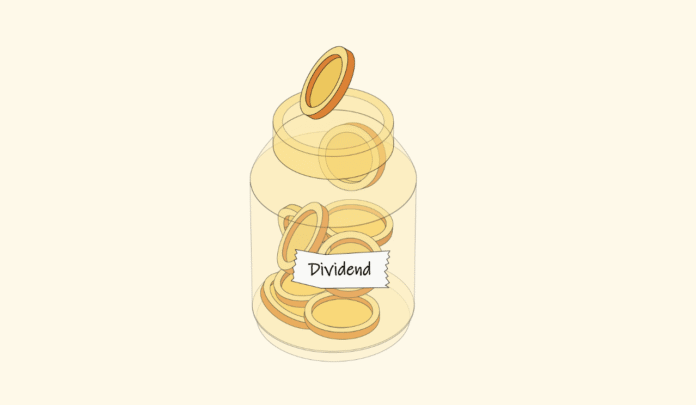In an increasingly unpredictable financial landscape, dividend investing has emerged as a favored strategy for those seeking a reliable and sustainable source of passive income. Unlike strategies focusing solely on capital gains, dividend investing allows investors to earn steady cash flow through dividend payments—typically quarterly distributions of a company’s profits to its shareholders. This approach not only provides regular income but can also offer portfolio diversification and potential long-term growth. In this comprehensive guide, we will explore the fundamentals of dividend investing, key strategies, and practical steps to help you build your own passive income stream.
Understanding Dividend Investing
Dividend investing centers around purchasing shares in companies—known as dividend-paying stocks—that distribute a portion of their earnings to shareholders. These dividends can be paid in cash or additional stock. Historically, many established companies pay regular dividends, making them attractive to income-focused investors such as retirees, conservative investors, or anyone who desires predictable cash flow without selling their investments.
Beyond generating income, dividend investing offers powerful compounding advantages when dividends are reinvested. Over time, reinvested dividends capture additional shares of stock, which in turn generate their own dividends, accelerating wealth growth.
Types of Dividend Stocks
Not all dividend stocks are created equal. Investors can typically categorize dividend-paying stocks into several groups:
Blue-Chip Dividend Stocks: These are shares of large, established companies with a long history of consistent dividend payments. Examples include companies in sectors such as consumer staples, utilities, and telecommunications. They offer stability, though dividend yields may be moderate.
High-Yield Dividend Stocks: These stocks provide higher-than-average dividend yields, often attracting investors seeking immediate income. However, very high yields might indicate company distress or unsustainable payouts, warranting careful research.
Dividend Growth Stocks: These companies consistently increase their dividend payments year after year. Though current yields may be lower, the growth potential and increasing payouts over time can significantly enhance income streams.
REITs and MLPs: Real Estate Investment Trusts (REITs) and Master Limited Partnerships (MLPs) are specialized entities required to distribute a large percentage of their income as dividends, often yielding attractive income. They come with unique tax considerations but can add valuable diversity.
Key Metrics to Evaluate Dividend Stocks
To build a quality dividend portfolio, investors should assess key financial metrics:
Dividend Yield: This is the annual dividend per share divided by the stock price, expressed as a percentage. It measures the income generated relative to the investment.
Payout Ratio: The portion of earnings paid out as dividends. A moderate ratio suggests sustainable dividends; extremely high ratios may signal risk.
Dividend Growth Rate: Historical or projected increase in dividend payouts over time. Consistent growth is a positive indicator.
Earnings Stability: Reliable and growing earnings support sustained dividends.
Free Cash Flow: Cash available after capital expenses, crucial for funding dividends.
Building a Dividend Portfolio: Strategies
Diversification Across Sectors and Geographies
Avoid concentrating your dividend investments in one sector to hedge against industry-specific risks. Consider global dividend-paying companies to benefit from international growth and reduce home-country bias.
Focus on Dividend Growth and Sustainability
Prioritize companies that exhibit a strong track record of increasing dividends alongside financial health metrics. These companies are more likely to withstand economic downturns.
Reinvest Dividends to Compound Growth
Utilize dividend reinvestment plans (DRIPs) to automatically reinvest dividends into additional shares. This accelerates portfolio growth and leverages compounding power.
Balance Yield and Quality
Avoid chasing the highest yields at the expense of company stability. A balanced portfolio includes steady dividend payers alongside a few high-yield positions with careful monitoring.
Regularly Review and Rebalance
Markets and company fundamentals change. Periodic review helps ensure your portfolio aligns with income goals and risk tolerance.
Tax Considerations for Dividend Income
Dividend income is typically taxable, but tax treatments vary by country and investment types. Qualified dividends might be taxed at lower rates than ordinary income in many jurisdictions. Understanding local tax laws and considering tax-efficient investment accounts can improve net income from dividends.
Risks and Challenges
Like all investment strategies, dividend investing carries risks. Market volatility, interest rate fluctuations, and company-specific challenges can affect dividend payouts. Some industries may cut dividends during economic downturns. Investors should remain vigilant and prioritize research and diversification.
Practical Steps to Start Dividend Investing
Open a brokerage account with access to dividend-paying stocks and DRIP features.
Define your income goals and risk tolerance.
Research and select companies or funds aligned with your objectives.
Decide your investment amount and purchase shares.
Set up dividend reinvestment if desired.
Monitor regularly, stay informed on company earnings and policy announcements.
Using Dividend ETFs and Mutual Funds
For investors seeking diversified dividend exposure without the hassle of individual stock selection, dividend-focused exchange-traded funds (ETFs) and mutual funds offer a practical solution. These funds pool dividend-paying securities and distribute dividends proportionally to investors, providing easy diversification and professional management.
Conclusion
Dividend investing is an art that balances income generation with long-term growth. By thoughtfully selecting quality dividend payers, reinvesting income, and maintaining diversification, investors can gradually build a reliable passive income stream that supports financial independence and wealth preservation. Whether you are a novice investor or seeking ways to enhance your portfolio, embracing the power of dividends could be your pathway to steady income and enduring prosperity.


